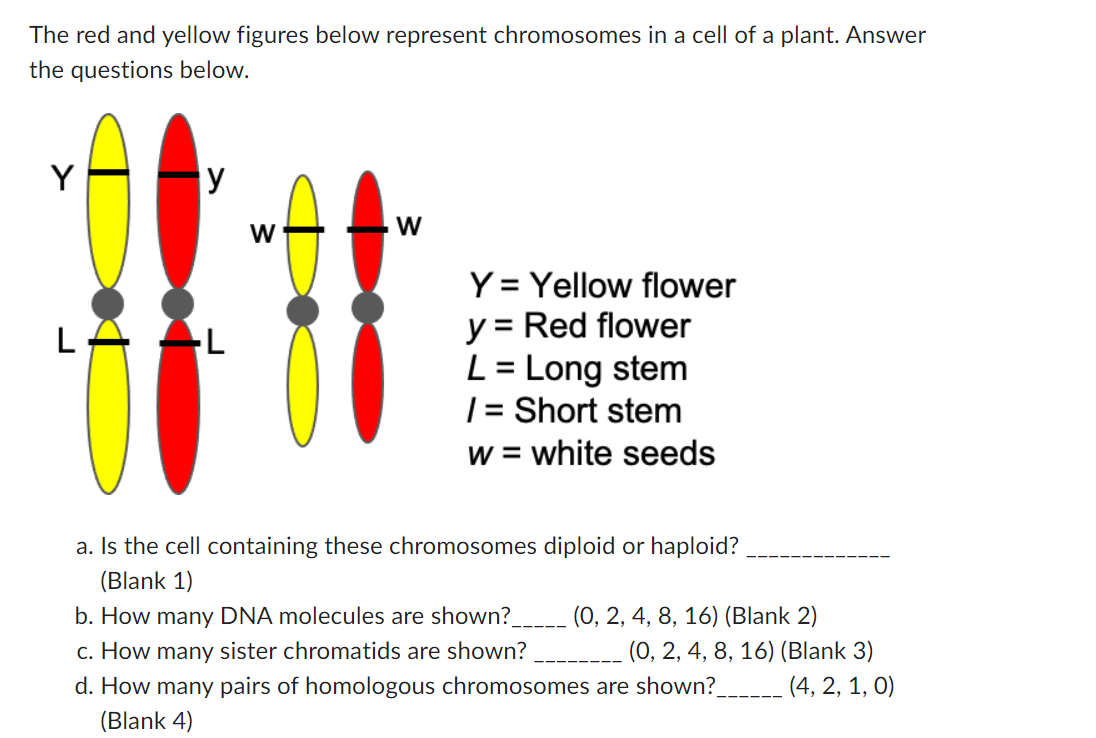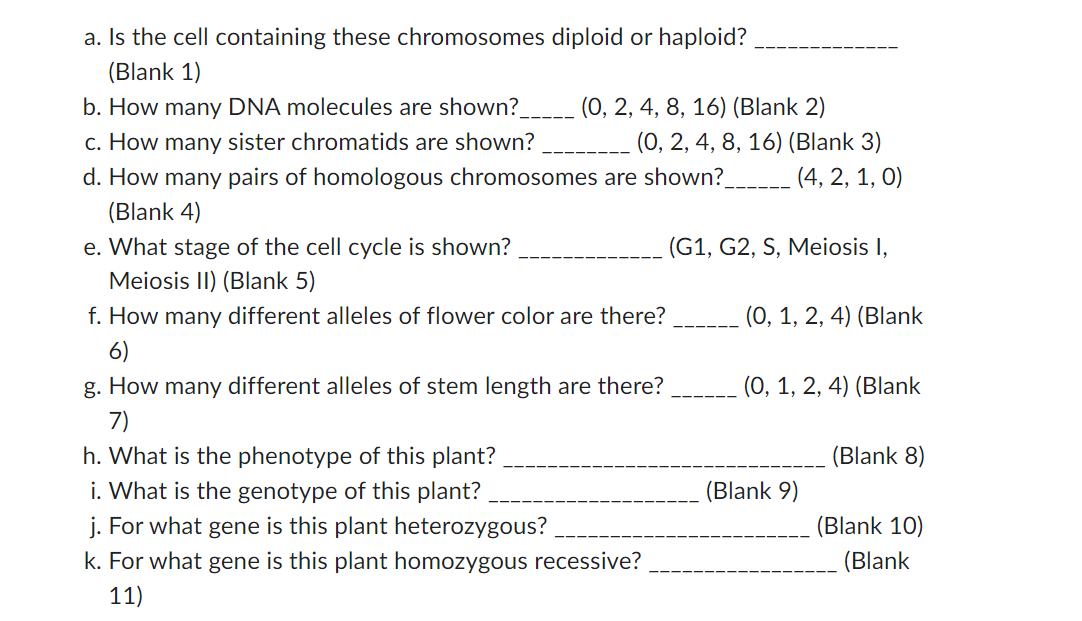Home /
Expert Answers /
Biology /
the-red-and-yellow-figures-below-represent-chromosomes-in-a-cell-of-a-plant-answer-the-questions-pa643
(Solved): The red and yellow figures below represent chromosomes in a cell of a plant. Answer the questions ...
The red and yellow figures below represent chromosomes in a cell of a plant. Answer the questions below. \( Y= \) Yellow flower \( y= \) Red flower \( L= \) Long stem \( I= \) Short stem \( w= \) white seeds a. Is the cell containing these chromosomes diploid or haploid? (Blank 1) b. How many DNA molecules are shown? \( (0,2,4,8,16) \) (Blank 2) c. How many sister chromatids are shown? \( (0,2,4,8,16)( \) Blank 3) d. How many pairs of homologous chromosomes are shown? \( (4,2,1,0) \) (Blank 4)
a. Is the cell containing these chromosomes diploid or haploid? (Blank 1) b. How many DNA molecules are shown? \( \quad(0,2,4,8,16) \) (Blank 2) c. How many sister chromatids are shown? \( (0,2,4,8,16) \) (Blank 3) d. How many pairs of homologous chromosomes are shown? \( (4,2,1,0) \) (Blank 4) e. What stage of the cell cycle is shown? (G1, G2, S, Meiosis I, Meiosis II) (Blank 5) f. How many different alleles of flower color are there? \( (0,1,2,4) \) (Blank 6) g. How many different alleles of stem length are there? \( (0,1,2,4) \) (Blank 7) h. What is the phenotype of this plant? (Blank 8) i. What is the genotype of this plant? (Blank 9) j. For what gene is this plant heterozygous? (Blank 10) k. For what gene is this plant homozygous recessive? (Blank 11)
Expert Answer
a.Homologous chromosomes are the chromosomes with same size and similar characters.one chromosome is obtained from mother and the other chromosome is

